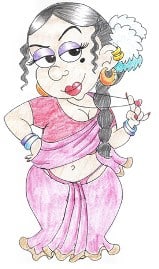 Against
Against
Einstein while explaining his relativity theory of time gave the example of how one hour with a gorgeous woman seems like a second and a second at a boring conference seems like an hour. Similarly, a fifty minute lecture with a teacher can vary from seeming like two minutes to fifty hours and in the case of the latter, you are sitting in the class wishing desperately to get out but you cannot! Why? Because DU rules say that five per cent of your score is determined by your attendance. This rule compels so many of us to attend boring lectures where we have no interest in the subject or as is more common, where we are blessed with a wonderful teacher who manages to completely kill our interest in the subject. They say that this rule is necessary so that the teacher does not have to face an empty classroom. I find that attitude defeatist. At the age of 18 (when most of us enter college), do they really think that we have the wisdom to choose which MPs will govern us but not have the intelligence to decide which classes we must attend? As it is, we do not have too much choice regarding the subjects we wish to study in the Indian system. At least in college we should be able to assert our choice. The argument about no one attending classes if we do not have marks for it falls on its head when we look at what a truly great teacher can do. At a very famous DU college a professor’s classes are so famous that while he’s teaching even the window sills in the lecture room are filled with kids. People turn up even when they know they will get absolutely no marks for attending, so surely if the teaching standard is great students will turn up. On the other hand, if students attend classes just for the sake of marks but pay no attention in class, does that really help anyone at all? When teachers know that to avoid teaching empty classrooms they’d have to earn it, wouldn’t it raise the level of teaching? Doesn’t this give us an instrument of protest against bad teaching? If the authorities do decide to accord some respect to our ability to make our own choices they’ll realize for a fact that most students are in fact quite keen on actually learning and it will encourage a love for learning.
At the end of the day, keeping aside all debates on the efficiency of exams and the process of checking, aren’t our marks supposed to be a reflection of how deeply we understand the subject? Does attending a few lectures less than the other person really translate into having a deeper understanding? I doubt that. Doling out marks for attendance only limits our choices. And as an Economist has famously said, limiting my choices mostly limits my happiness.
For
Popular culture would have us believe that college life is one joyride with having fun being the only objective of students and studies being some vague entity they are hardly concerned with. Bunking classes in the higher interest of Chilling and contributing to the friendly neighbourhood chaatwala’s revenue is but natural and classrooms are there only to accommodate all the furniture. Most of us would like to believe in this romanticized version of college life and consider the attendance rule a major bubble-burster, but what we seem to be forgetting is that DU is an educational institution with teaching and learning being the primary aim and for this aim to be achieved, a few rules are necessary.
Let’s face it. If it weren’t for the lure of the 5 extra marks reserved for those with an attendance of 85% or more, most of us would definitely not have attended as many classes as we do presently. Though everyone grumbles about this regulation, they fail to realize that it is not a compulsion but an incentive. You have the freedom to bunk as many classes as you want without losing any marks at all. The university doesn’t punish those who fail to turn up for lectures, it only rewards those who do. I just don’t understand why anyone would have a problem with a rule that gives one extra marks merely for sitting around in classrooms.
Though 5 marks don’t seem like much right now, it can actually make a lot of difference in the larger scheme of things. 5 marks can convert a second division into a first, a fail into a pass, a commoner into a topper and so on. In short, five marks can make or break you. Instead of protesting against this ruling, students should be celebrating it and making the most of the opportunity. By imposing this regulation on us, the management is not curbing our rights, but broadening our scope to score marks. The rule, far from being a pain, is actually a blessing in disguise.
Admittedly, sitting under the fan in a classroom doesn’t really test any skill (except, perhaps one’s patience) and therefore deserves no extra marks. But in this way, the regulation is an equalizer. It cuts through all intellectual barriers, for once giving the average student the chance to score just as much the topper with sheer determination and well, endurance.
Summing up, the attendance rule is just a harmless, democratic tool to ensure that classrooms don’t remain empty and makes life a lot easier for the majority of us. It’s time we stopped objecting to every little rule and instead, start figuring out how to make them work us instead.
(This article has been equally contributed by Shraddha and Aina)



